Hey there, fellow dog enthusiasts! 🐾 Are you ready to dive into the captivating realm of dog breeds?
From the tiny Chihuahua to the majestic Great Dane, each breed brings a unique personality, appearance, and set of traits to the table.
Buckle up as we embark on this journey of understanding the dazzling diversity of dog breeds and learn how to choose the furry friend that’s just right for you.
Introduction
A dog breed is like a special recipe that combines certain characteristics and traits, resulting in a distinctive look, behavior, and temperament.
Over centuries, humans have selectively bred dogs for various purposes, from herding livestock to being our loyal companions.
Understanding the Diversity of Dog Breeds
Just like a palette of colors, the diversity among dog breeds is astounding. Imagine having a pint-sized Pomeranian that fits in your pocket or a sturdy Labrador Retriever ready for a game of fetch at any given moment.
From toy breeds to working breeds, each category comes with its own unique features. Let’s break it down:
| Category | Description |
|---|---|
| Toy Breeds | Petite pups that make excellent indoor companions. |
| Working Breeds | Energetic and intelligent dogs that excel at various tasks like herding and search and rescue. |
| Sporting Breeds | Natural athletes that thrive on outdoor activities and adventures. |
| Herding Breeds | Masters of controlling and organizing, perfect for active households. |
Factors to Consider When Choosing a Dog Breed
Choosing the right dog breed is like picking the perfect puzzle piece to complete your life’s picture. Here are some factors to consider:
Lifestyle Compatibility: Are you a couch potato or an avid hiker? Different breeds have different energy levels. Match your lifestyle with a breed that suits your activity level.
Living Space: A spacious backyard or a cozy apartment? Some dogs need room to roam, while others are content with less space.
Allergies: If allergies are a concern, look for hypoallergenic breeds with minimal shedding.
Maintenance: Grooming needs vary widely. Some breeds require regular grooming, while others are low-maintenance.
Family Dynamics: Do you have kids, other pets, or elderly family members? Certain breeds are more tolerant and gentle in these situations.
Remember, there’s no one-size-fits-all answer. It’s about finding the breed that clicks with your unique situation and preferences.
“The greatest fear a dog will ever know is the fear that you will not come back.” — Stanley Coren
Each breed adds its own splash of color to the canvas of life, making it richer and more vibrant.
When you’re ready to welcome a four-legged friend into your home, take your time, do your research, and choose a breed that aligns with your heart and lifestyle.
Small Dog Breeds
Let’s also take a look at the positives and considerations of bringing these charming pint-sized companions into your life. Join the fun!
Characteristics and Traits of Small Dog Breeds
Small dog breeds typically weigh under 20 pounds and have a height of around 6 to 16 inches at the shoulder.
These dogs often have unique characteristics and traits that set them apart:
- Compact Size: Small dogs are easily portable and can comfortably live in apartments or houses with limited space.
- Affectionate: Many small breeds are known for their affectionate nature, often forming strong bonds with their owners.
- Low Exercise Needs: While some small breeds are energetic, many have lower exercise requirements compared to larger dogs. They often enjoy short walks and indoor play.
- Adaptable: Small dogs can adapt well to different living environments, making them suitable for urban and suburban lifestyles.
- Grooming: Grooming needs vary, but some small breeds have minimal shedding and grooming requirements, making them easier to maintain.
- Alertness: Many small breeds have a keen sense of alertness and can be excellent watchdogs, alerting their owners to any potential threats.
Popular Small Dog Breeds
Here are a few examples of popular small dog breeds that might be a good fit for you:
Chihuahua
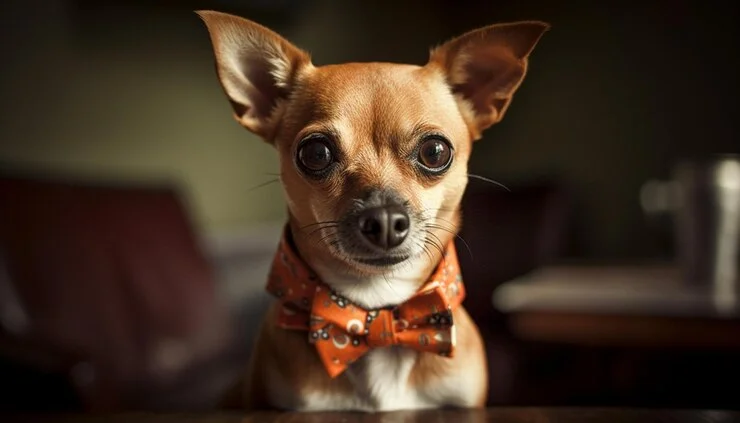
Small and spirited, Chihuahuas are known for their loyalty to their owners. They can have either short or long coats and thrive in households with attentive companionship.
Dachshund
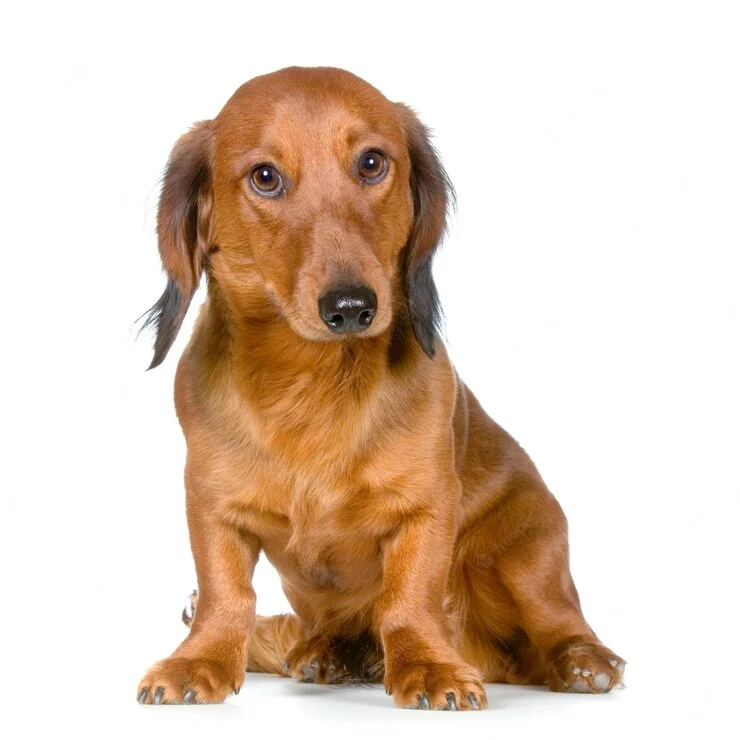
With their distinctive elongated bodies and short legs, Dachshunds are playful and curious. They come in various coat types, such as smooth, longhaired, and wirehaired.
French Bulldog
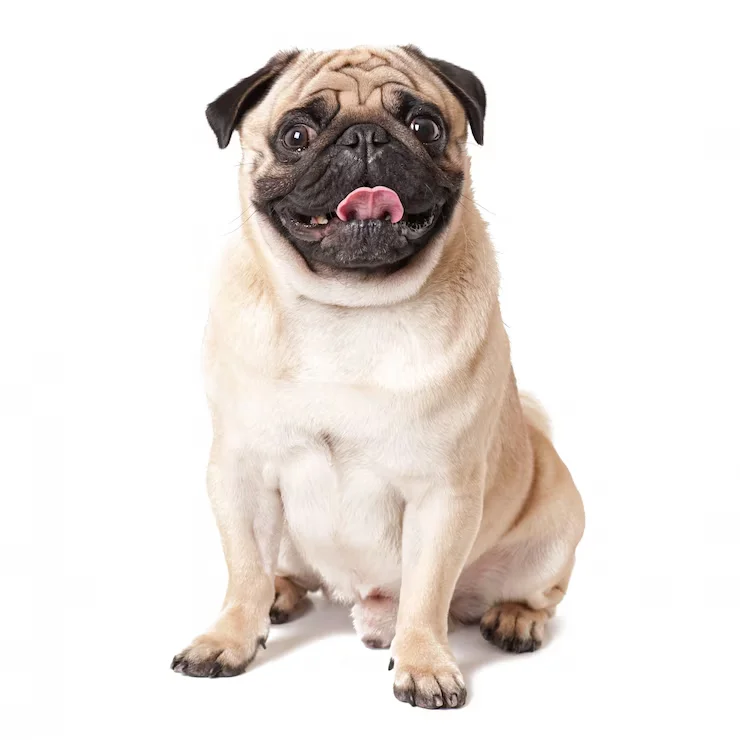
French Bulldogs are known for their affectionate and adaptable nature. French Bulldogs have a distinctive appearance with a stocky body and bat-like ears.
Pros and Cons of Owning a Small Dog
Pros:
- Portability: Small dogs are easier to take with you on trips and outings due to their compact size.
- Indoor Living: Small dogs are well-suited for indoor living, making them great companions for apartment dwellers.
- Lower Exercise Needs: Many small breeds require less exercise, making them suitable for people with busy lifestyles or limited physical capabilities.
- Less Space: Small dogs need less space to move around, which is ideal for those with smaller living areas.
- Affectionate Companionship: Small breeds often form strong bonds with their owners and can be very affectionate.
Cons:
- Fragility: Small dogs can be more delicate and susceptible to injuries, especially in households with young children or larger pets.
- Training Challenges: Some small breeds can be stubborn or difficult to train due to their independent nature.
- Health Concerns: Some small breeds are prone to certain health issues, such as dental problems and respiratory conditions.
- Socialization Needs: Small dogs may need more socialization efforts to ensure they are comfortable around other dogs and people.
- Grooming: Some small breeds have specific grooming needs that require regular maintenance.
Medium-Sized Dogs Breeds
Medium-sized dog breeds typically fall in the weight range of 30 to 60 pounds and have a height of around 18 to 24 inches at the shoulder.
They often possess a balanced combination of qualities from both small and large breeds. Some common traits and qualities of medium-sized dogs include:
- Versatile: Medium-sized dogs often excel in various roles, including companionship, working, and sports activities.
- Adaptable: They can comfortably fit into a range of living spaces, from apartments to houses with yards.
- Energetic: Many medium-sized breeds are energetic and require regular exercise to maintain their physical and mental well-being.
- Trainable: Medium-sized dogs are often intelligent and responsive to training, making them great candidates for obedience, agility, and other activities.
- Social: Medium-sized breeds tend to be social and enjoy interacting with both people and other animals.
- Family-Friendly: They often get along well with children and are suitable for families.
- Guarding and Alertness: Some medium-sized breeds have a natural guarding instinct and can be alert watchdogs.
Popuplar Medium-Sized Dog Breeds:
Here are a few examples of medium-sized dog breeds
Labrador Retriever
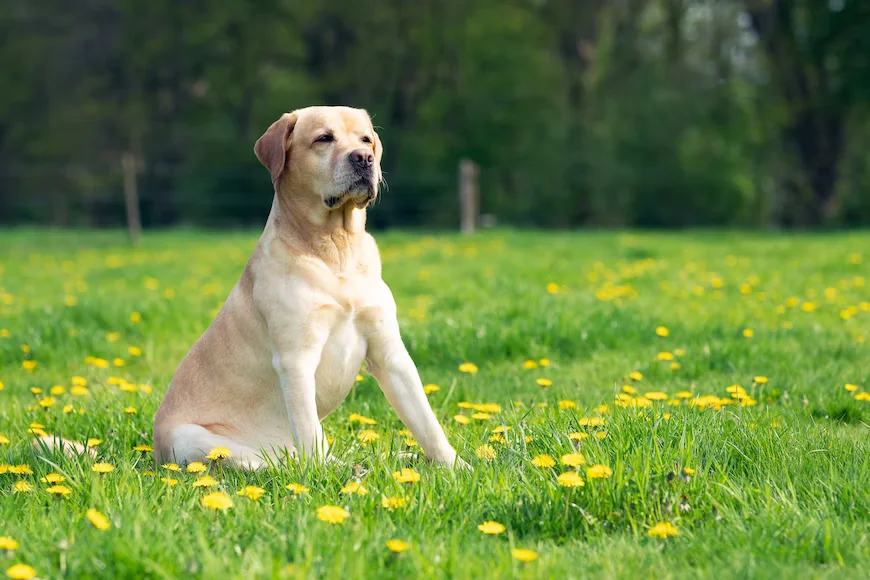
Friendly, outgoing, and high-spirited. Labradors are famous for their loyalty, intelligence, and love for families.
Cocker Spaniel
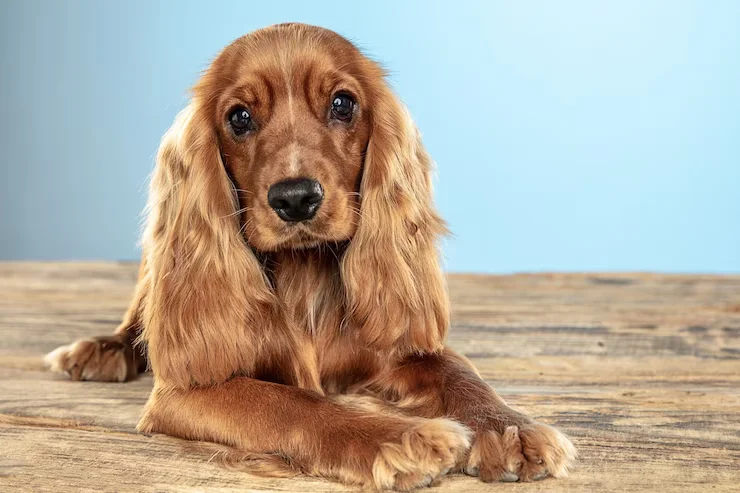
Gentle, affectionate, and playful. Cocker Spaniels are known for their beautiful coats and merry personalities.
Bulldog

Calm, courageous, and affectionate. Bulldogs have a distinctive appearance and make great indoor companions.
Lifestyle Considerations for Medium-Sized Breeds:
When considering a medium-sized dog breed, there are a few lifestyle factors to keep in mind:
- Exercise Needs: Many medium-sized breeds have moderate to high exercise needs. Daily walks, playtime, and mental stimulation are important for their well-being.
- Living Space: Medium-sized dogs can adapt to different living situations, but having access to a yard or nearby parks can greatly enrich their lives.
- Training and Socialization: Proper training and early socialization are crucial for medium-sized breeds to ensure your dog become well-behaved and well-adjusted companions.
- Health Care: Research breed-specific health issues and schedule regular veterinary check-ups to maintain your dog’s overall health.
- Grooming: Different breeds have different grooming needs. Some may have longer coats that require more maintenance, while others may have shorter coats with minimal grooming requirements.
- Time Commitment: Dogs, regardless of size, require time and attention. Ensure you can commit to daily care, training, exercise, and companionship.
- Family Compatibility: Consider your family’s lifestyle and the personalities of individual family members when selecting a medium-sized breed.
Some breeds may be better suited for families with children, while others may be more suitable for single individuals or couples.
Remember that each dog is an individual, and while breed characteristics provide a general idea, there can be variation within each breed.
Large Dog Breeds
Large dog breeds typically weigh over 50 pounds and can stand around 22 to 30 inches or more at the shoulder.
These breeds often possess distinctive features and qualities that set them apart:
- Stature and Presence: Large dogs command attention with their impressive size and often have a commanding presence.
- Strength and Versatility: Many large breeds were originally developed for working roles such as guarding, herding, and pulling carts due to their strength and versatility.
- Energy Levels: While energy levels can vary, some large breeds have higher exercise requirements to maintain their physical and mental well-being.
- Loyalty and Protective Instincts: Large breeds like the German Shepherd are known for their loyalty and protective nature, making them excellent family and working dogs.
- Grooming: Grooming needs can vary widely among large breeds, from those with thick coats requiring regular maintenance to those with short coats needing minimal care.
Popular Large Dog Breeds
Here are a few examples of prominent large dog breeds:
German Shepherd
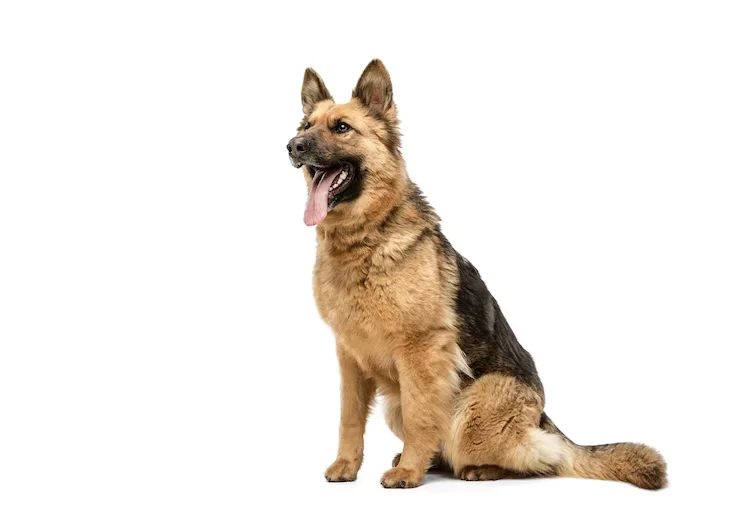
Intelligent, loyal, and versatile, German Shepherds are often used as police and service dogs. German Shepherds excel in various roles and have a distinctive appearance with a double coat.
Golden Retriever
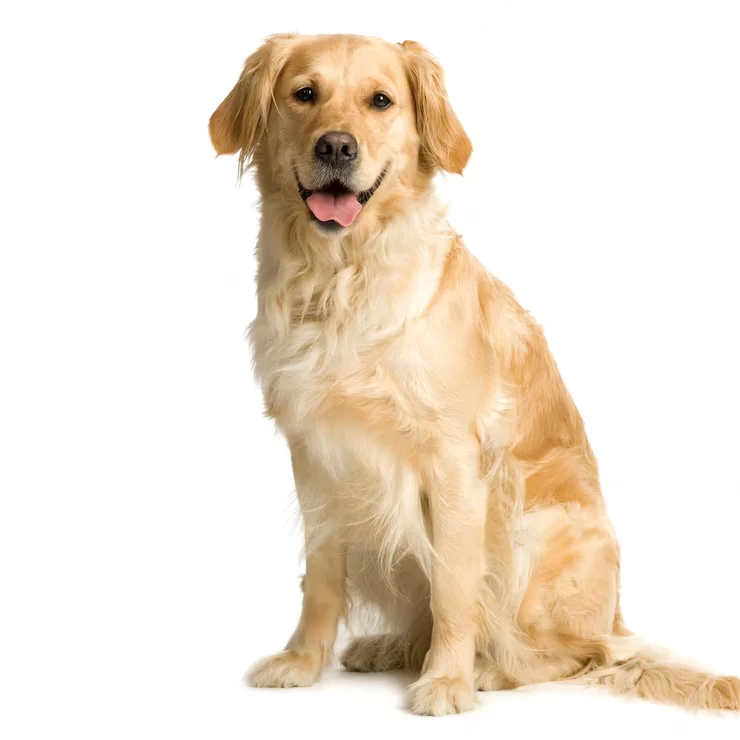
Friendly, intelligent, and gentle, Golden Retrievers are beloved family pets known for their friendly nature and golden coats.
Great Dane

Great Danes are known for their impressive size and gentle temperament. Due to their size, Great Danes are often referred to as “gentle giants.”
Challenges and Rewards of Owning a Large Dog
Challenges:
- Space Requirements: Large dogs need more space to move around and exercise, making them less suitable for smaller living spaces.
- Exercise Needs: Many large breeds have high exercise requirements to keep them physically and mentally stimulated. Regular walks, playtime, and outdoor activities are essential.
- Health Concerns: Some large breeds are prone to certain health issues, such as joint problems and bloat, which require careful monitoring and preventive measures.
- Costs: Large dogs generally require more food, larger beds, and potentially higher veterinary costs due to their size.
- Training: Proper training is crucial for large breeds due to their strength and potential to cause unintentional harm if not properly controlled.
Rewards:
- Loyal Companionship: Large dogs often form strong bonds with their owners and can provide loyal companionship.
- Protection: Many large breeds have natural protective instincts, making them effective guard dogs and providing a sense of security.
- Working Abilities: Some large breeds excel in various working roles, such as search and rescue, therapy, and service.
- Outdoor Activities: If you enjoy outdoor activities like hiking, running, or playing fetch, many large breeds can be excellent companions.
- Family-Friendly: Some large breeds, like the Golden Retriever, are known for their gentle nature and compatibility with children.
Consider your living situation, lifestyle, and commitment to providing the necessary care, training, and exercise.
Large breeds can make wonderful companions for people who can meet their needs and provide a loving and structured environment.
Working Dog Breeds
Sure thing! 😊 Working dog breeds are like the superheroes of the dog world! They’re super smart, easy to train, and they absolutely love to get the job done.
These dogs are like the perfect partners for specific tasks. They’re the ones who have tons of energy, can stay super focused, and can do all sorts of important stuff alongside us humans.
Let’s dive into some cool things that make working dogs stand out:
- Intelligence: Working breeds are highly intelligent and capable of learning complex tasks and commands.
- Trainability: These dogs are responsive to training and are often eager to learn and please their handlers.
- Physical Stamina: Many working breeds have high levels of endurance, enabling them to perform tasks that require sustained effort.
- Strong Work Ethic: Working dogs have a natural inclination to perform tasks and are driven to be productive.
- Versatility: Working dogs can excel in various roles, from herding and guarding to search and rescue, therapy work, and assistance tasks.
- Loyalty: Working breeds are often deeply loyal to their handlers and families.
Top Working Dog Breeds
Here are a few examples of top working dog breeds
Border Collie
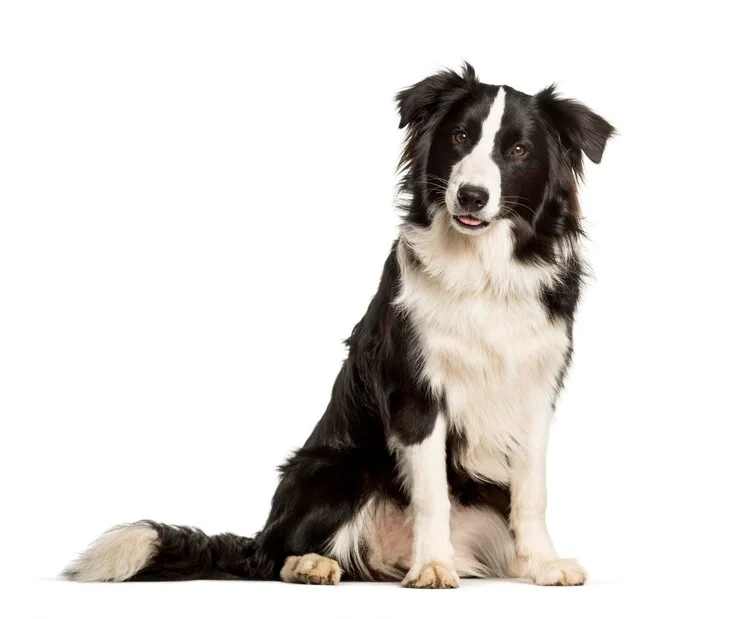
Border Collies are renowned for their herding abilities and incredible intelligence. They thrive when given jobs to do and require mental stimulation and physical activity.
Rottweiler

Rottweilers are versatile working dogs known for their strength and protective nature. They excel in roles such as guarding, police work, and search and rescue.
Boxer
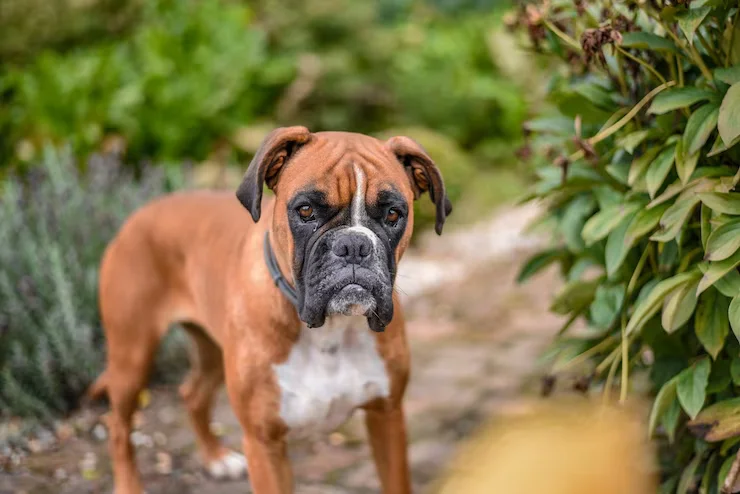
Boxers are strong and energetic working dogs with playful and affectionate personalities. They have been used in various roles, including protection, service, and therapy work.
Suitable Roles for Working Breeds
Working dog breeds can excel in a wide range of roles, depending on their specific skills and characteristics:
- Herding: Breeds like Border Collies, Australian Shepherds, and German Shepherds have innate herding abilities and can effectively manage livestock.
- Guarding: Rottweilers, Doberman Pinschers, and Giant Schnauzers are known for their protective nature and are commonly used as guard dogs.
- Search and Rescue: Breeds like German Shepherds, Labrador Retrievers, and Belgian Malinois are often used in search and rescue missions due to their keen senses and agility.
- Service and Assistance: Dogs like Golden Retrievers and Labrador Retrievers are trained as service dogs to assist individuals with disabilities.
- Police and Military Work: Breeds like German Shepherds, Belgian Malinois, and Dutch Shepherds are frequently employed in police and military roles due to their intelligence and physical capabilities.
- Therapy and Emotional Support: Some working breeds, including Boxers and Bernese Mountain Dogs, excel in therapy and emotional support roles due to their gentle demeanor.
For these awesome working dog breeds, it’s really important to give them the right training, keep their minds and bodies active, and make sure we totally get what they need.
Getting these amazing dogs involved in tasks and activities that match their natural abilities can create a rewarding and productive team-up between the dog and their handler or owner.
It’s like a perfect match that leads to lots of success and happiness for both!
Sporting Dog Breeds
So, when it comes to sporting dog breeds, we’re talking about the real athletes of the doggy world.
These pups are all about being super fit, having endless energy, and totally wanting to team up with us humans.
You know, these breeds were actually bred way back for different hunting and fetching tasks, which makes them awesome pals for anyone who loves the great outdoors and families who are always up and about.
Let’s dive into what makes these sporting dogs so special:
- Energetic: Sporting breeds are typically high-energy dogs that require regular exercise and mental stimulation to stay happy and healthy.
- Strong Retrieving Instinct: Many sporting dogs have a natural instinct for retrieving items, whether it’s a game during a hunt or toys during playtime.
- Good Temperament: These breeds are often friendly, and sociable, and get along well with people and other dogs.
- Intelligence: Sporting dogs are intelligent and trainable, making them adaptable to various activities and tasks.
- Physical Endurance: They possess physical stamina, allowing them to participate in activities that require endurance, like running and swimming.
- Strong Senses: Many sporting breeds have keen senses of smell, sight, or both, which aids them in their hunting and tracking abilities.
Well-Known Sporting Dog Breeds
Here are a few examples of well-known sporting dog breeds:
Pointer

Pointers are known for their ability to locate game birds and then “point” or freeze to indicate their location to hunters. They are highly trainable and have a distinctive stance when pointing.
Setter
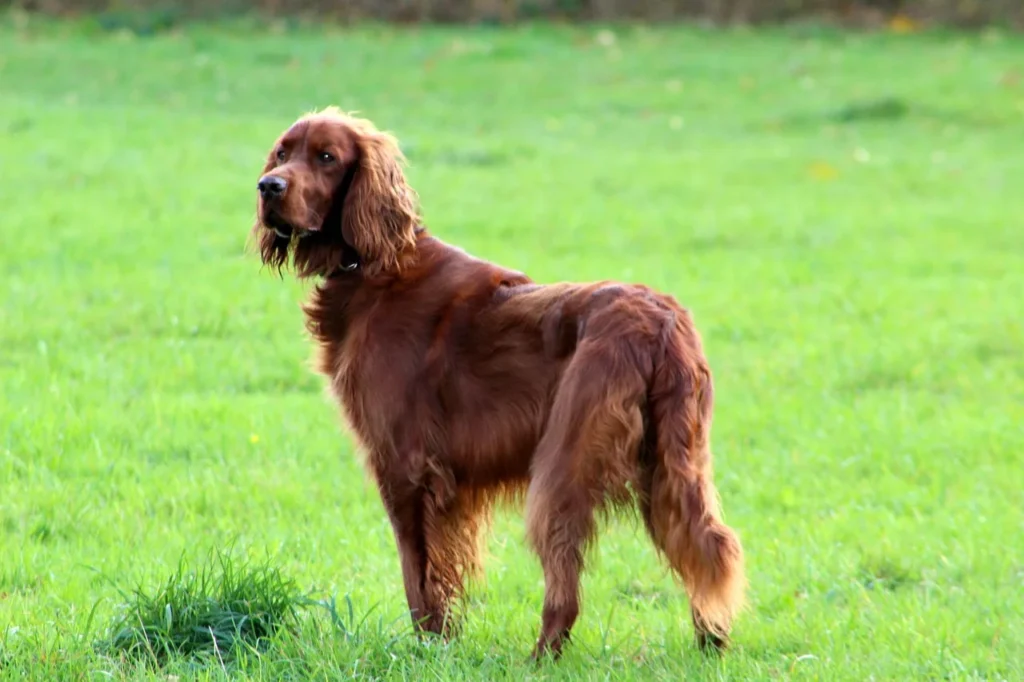
Setters have a graceful and elegant appearance. They were bred to “set” by crouching or lying down near game birds to signal their presence to hunters.
Retriever

Retrievers are known for their exceptional ability to retrieve game from land or water. Breeds like Labrador Retrievers and Golden Retrievers are popular choices due to their friendly personalities.
Activities to Keep Sporting Dogs Engaged
Sporting dogs thrive when engaged in activities that satisfy their natural instincts and energy levels:
- Fetch and Retrieving Games: Engage them in games of fetch, using toys or balls, to allow them to exercise their retrieving instincts.
- Agility and Obedience Training: Participate in agility and obedience training to stimulate their minds and challenge their physical abilities.
- Swimming: Many sporting breeds, especially retrievers, love to swim. Taking them to a nearby lake or pool can be both fun and great exercise.
- Hiking and Running: Sporting dogs make excellent companions for outdoor activities like hiking, jogging, and running.
- Scent Work: Engage their sense of smell with scent work activities, where they use their noses to find hidden treats or objects.
- Field Trials: Some sporting breeds excel in field trial competitions, which allow them to showcase their hunting and retrieving skills.
- Flyball and Dock Diving: Participate in sports like flyball (relay race with hurdles and tennis balls) or dock diving (jumping off a dock into water) to cater to their active nature.
Remember that consistent training, socialization, and mental enrichment are crucial for the well-being of sporting dogs.
Toy Dog Breeds
Toy dog breeds are known for their small size, charming personalities, and often luxurious coats.
These breeds are popular companions and are well-suited for indoor living. Here are some key characteristics of toy dog breeds:
- Tiny Size: Toy breeds are very small, often weighing under 10 pounds and standing around 6 to 12 inches tall at the shoulder.
- Adorable Appearance: They have a cute and endearing appearance, which often makes them attractive as lapdogs and companions.
- Affectionate: Toy breeds are often affectionate and enjoy close relationships with their owners, thriving on human companionship.
- Variety of Coat Types: Toy dogs come with a variety of coat types, including long, silky, curly, or smooth coats.
- Indoor Living: Due to their size, toy breeds are well-suited for apartment living and don’t require as much space as larger breeds.
- Low Exercise Requirements: Many toy breeds have lower exercise needs compared to larger breeds, making them suitable for people with a more sedentary lifestyle.
Popular Toy Dog Breeds
Here are a few examples of popular toy dog breeds:
Pomeranian
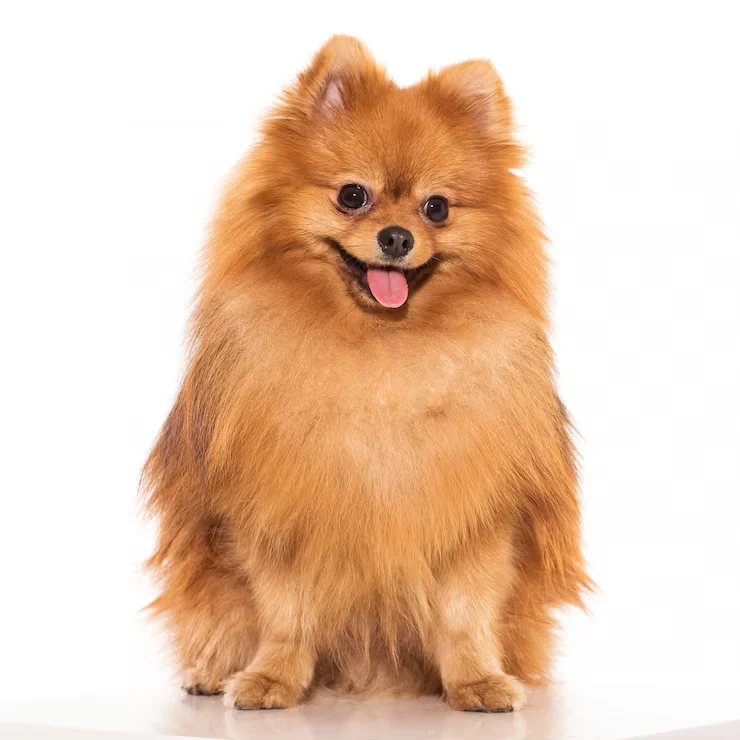
Pomeranians are known for their fluffy double coats and lively personalities. Due to their small size, they often have a bold and confident attitude.
Yorkshire Terrier
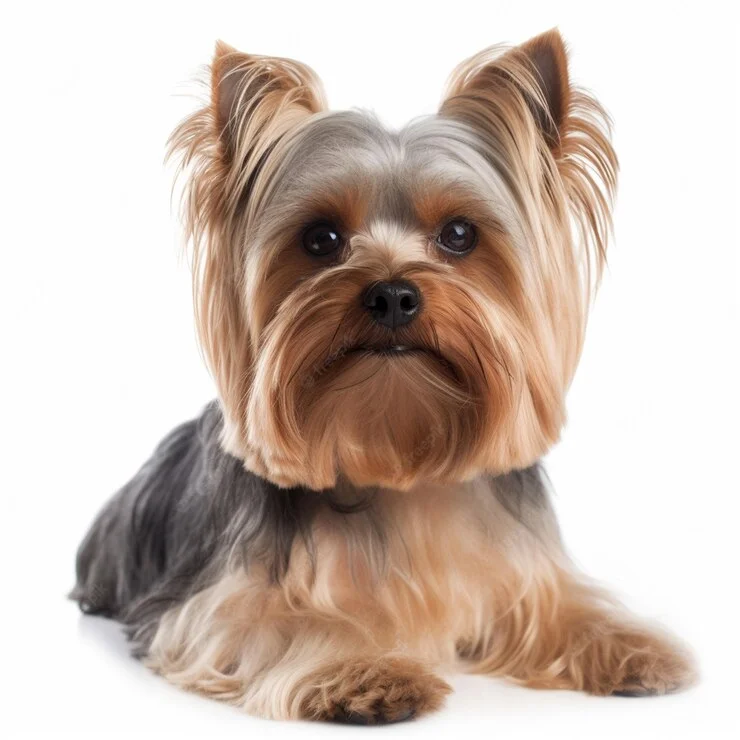
Yorkshire Terriers, or “Yorkies,” have a glossy, fine-textured coat and a spunky demeanor. They are popular companions known for their loyalty.
Shih Tzu
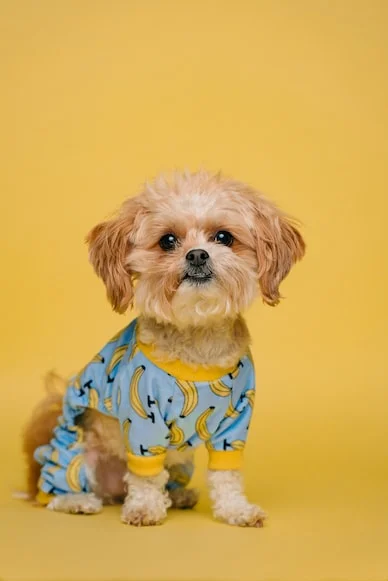
Shih Tzus have long, flowing coats and a regal appearance. Shih Tzus are affectionate and enjoy being pampered by their owners.
Caring for the Unique Needs of Toy Breeds
Caring for toy dog breeds requires some special considerations due to their size and unique characteristics:
- Gentle Handling: Due to their small size, toy breeds can be more fragile and require gentle handling to prevent injuries.
- Regular Grooming: Many toy breeds have long coats that require regular grooming to prevent matting and keep their fur looking its best.
- Socialization: Socialize toy breeds early and consistently to ensure they are comfortable around people, other dogs, and various environments.
- Indoor Comfort: Toy breeds are sensitive to extreme weather, so provide them with a comfortable indoor environment during hot or cold conditions.
- Dental Care: Small breeds are prone to dental issues, so regular dental care, including brushing their teeth, is essential.
- Regular Vet Visits: Regular veterinary check-ups are crucial for maintaining the health of toy breeds and addressing any potential issues.
- Mental Stimulation: Engage toy breeds with interactive toys, puzzles, and training sessions to keep their minds sharp and prevent boredom.
- Balanced Diet: Feed toy breeds a high-quality, balanced diet appropriate for their size and energy level to ensure their overall well-being.
Remember that toy breeds may have specific health concerns related to their size, such as dental problems, tracheal issues, and luxating patellas.
Before welcoming to your home, research the specific needs of the toy breed you’re interested in and provide them with the care, attention, and love they require to thrive.
Companion Dog Breeds
Looking for a loyal friend who’ll stick by your side through thick and thin? Look no further than companion dog breeds.
Qualities that Define Companion Dogs
Companion dogs are experts at stealing hearts and melting worries away. Here’s why they’re adored by millions:
- Unconditional Love: These four-legged friends offer a love that knows no bounds. Your furry friend’s loyalty and affectionate nature create a special connection that enriches your life.
- Emotional Support: Companion dogs have an innate ability to sense your emotions. Dogs are always there to provide comfort and companionship, whether you’re celebrating victories or facing challenges.
- Devotion: These dogs thrive on human companionship and are happiest when they’re by your side. They’ll eagerly join you in daily activities, creating a sense of companionship that can’t be matched.
- Reduced Stress: The presence of a companion dog has been shown to reduce stress and anxiety. Their calming influence can turn a tough day into a brighter one.
Popular Companion Dog Breeds
Let’s take a closer look at a few breeds that excel in the role of loving companions:
Poodle

Known for their intelligence and hypoallergenic coat, Poodles make excellent companions. They come in various sizes, including Standard, Miniature, and Toy, catering to different living spaces
Cavalier King Charles Spaniel
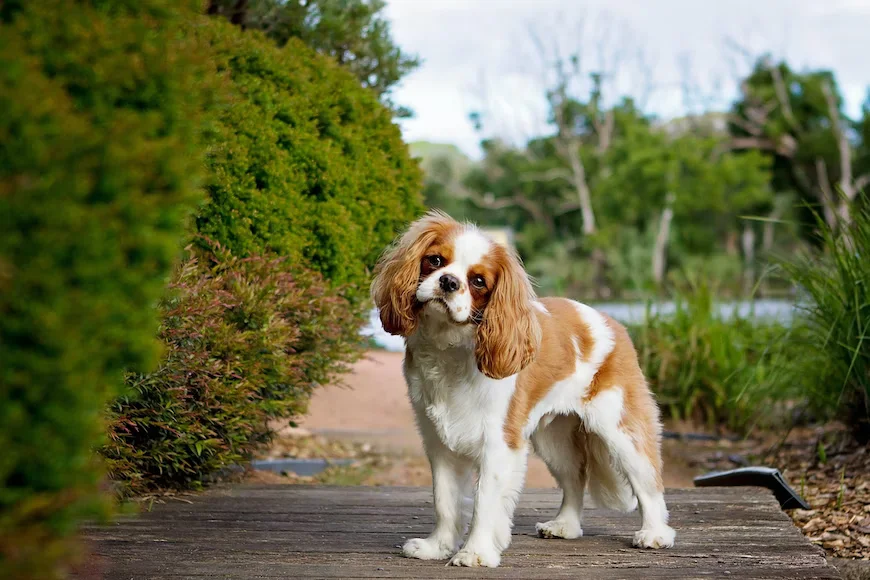
Cavalier King Charles Spaniel are affectionate and eager to please. Their warm nature and big, soulful eyes will instantly steal your heart.
Bichon Frise
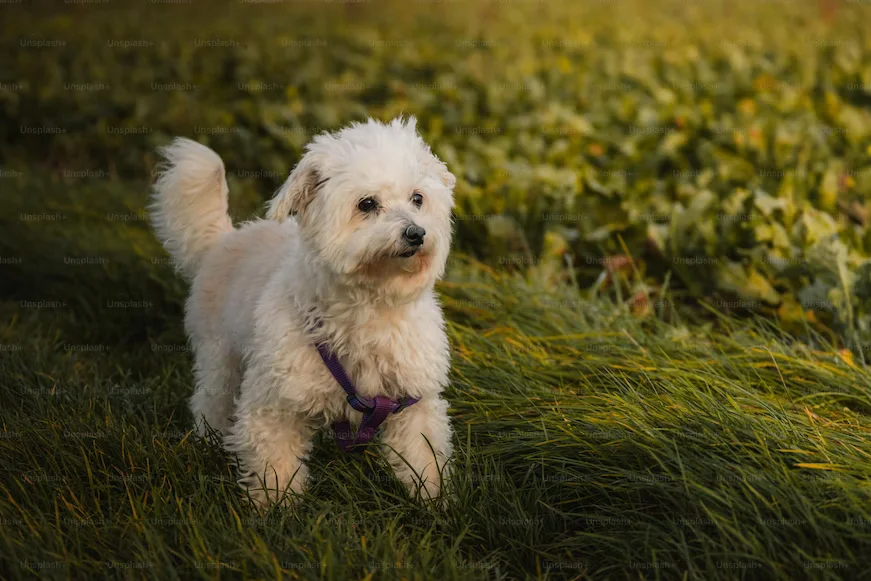
With their curly coats and cheerful personalities, Bichon Frises are perfect partners for those seeking a bundle of joy. They’re social, playful, and great with kids.
Enhancing the Bond with Companion Breeds
To make the most of your companionship with these special dogs, consider these tips:
- Quality Time: Spend quality time together through walks, playtime, and cuddles. Your presence and attention mean the world to them.
- Training and Socialization: Basic training and positive socialization build a strong foundation for a well-behaved and confident companion.
- Health and Wellness: Regular vet check-ups, a balanced diet, and exercise keep your furry friend happy and healthy, enhancing your time together.
- Open Communication: Pay attention to your companion’s cues and body language. This open communication helps you understand their needs and emotions.
- Create Memories: Create memories through adventures, outings, and even simple moments at home. These shared experiences strengthen your bond.
In a world that sometimes feels too busy, companion dogs offer a reminder of the simple joys in life.
The way these incredible dogs love us without fail, their never-ending loyalty, and how they can turn our frowns upside down… they’re way more than just pets.
Unique Dog Breeds
Are you ready to step into the realm of the extraordinary? Unconventional dog breeds bring a dash of the unexpected to the world of companionship.
Unconventional Dog Breeds and Their Fascinating Traits
Think of unconventional dog breeds as these hidden treasures in the world of dogs, each with a unique and fascinating story to share.
Let’s take a sneak peek into their captivating qualities:
Basenji

Known as the “barkless dog,” Basenjis communicate through yodel-like sounds instead of traditional barking. They’re also renowned for their impeccable grooming habits, often compared to that of a cat.
Xoloitzcuintli (Xolo)
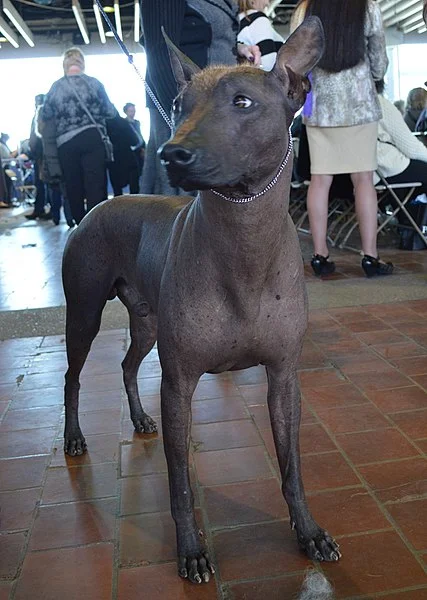
This ancient breed, also called the Mexican Hairless Dog, boasts a sleek and hairless or coated coat. Xolos have a strong connection to Mexican culture and are believed to have healing powers.
Tibetan Mastiff
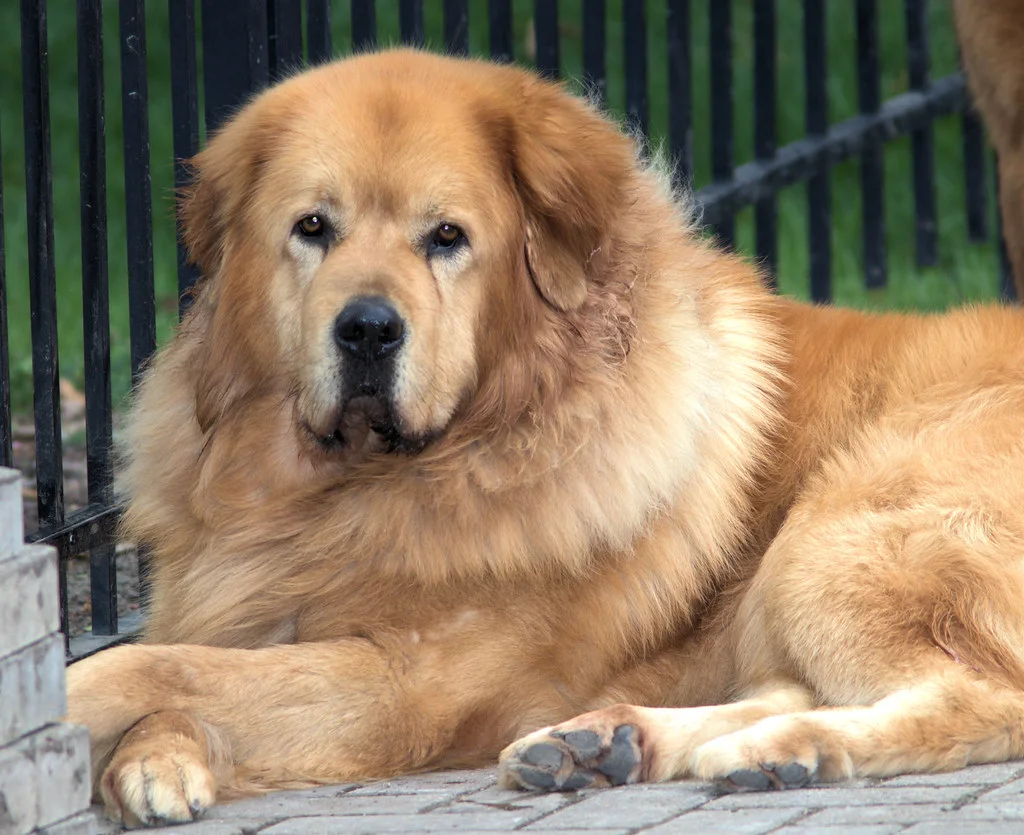
Majestic and imposing, the Tibetan Mastiff is known for its incredible loyalty and protective nature. With a thick double coat, this breed is perfectly adapted to handle cold climates.
Exotic Breeds: A Glimpse into Their World
Let’s delve deeper into the unique charm of these unconventional breeds:
- Basenji: Originating in Central Africa, Basenjis are intelligent and independent dogs. Their inability to bark doesn’t mean they’re silent – they’re quite expressive with their unique vocalizations.
- Xoloitzcuintli: With their ancient lineage, Xolos are often considered symbols of luck and protection in Mexican culture. They come in three sizes and can have either hairless or coated coats.
- Tibetan Mastiff: Hailing from the Himalayas, Tibetan Mastiffs are guardians at heart. They have a calm demeanor and are fiercely protective of their families and territory.
Meeting the Special Requirements of Unique Breeds
Adopting an unconventional breed comes with its own set of considerations. Here’s how to ensure their unique needs are met:
- Research and Education: Thoroughly research the breed’s history, traits, and requirements. Understanding their origins helps you provide appropriate care.
- Health and Grooming: Be aware of specific health concerns and grooming needs. Regular vet check-ups and grooming routines ensure their well-being.
- Training and Socialization: Tailor training and socialization to suit the breed’s personality. Positive reinforcement and exposure to various environments help them thrive.
- Environment and Lifestyle: Consider whether your living space and lifestyle align with the breed’s needs. Some breeds thrive in certain climates or require specific amounts of exercise.
- Respect Their Nature: Embrace the unique characteristics that define these breeds. Allow them to express their individuality while nurturing a loving bond.
Adopting an unconventional breed is like welcoming a piece of history, culture, or mystery into your home.
Their uniqueness shines brightly, reminding us of the incredible diversity within the canine world.
Hypoallergenic Dog Breeds
If you’ve been longing for a furry companion but allergy concerns have been holding you back, fear not – hypoallergenic dog breeds are here to save the day!
Understanding Hypoallergenic Dogs: A Breath of Fresh Air
Hypoallergenic dogs are like a breath of fresh air for allergy sufferers. They produce fewer allergens, specifically proteins in their skin cells, urine, and saliva, which are common triggers for allergic reactions.
Here’s what makes them stand out:
- Less Shedding: Hypoallergenic breeds tend to shed less hair, reducing the amount of allergens released into the environment.
- Non-Matting Coats: Many hypoallergenic breeds have coats that don’t shed as much and are less likely to form mats, making grooming more manageable.
- Minimal Dander: These dogs produce less dander, which is the primary cause of allergic reactions in humans.
Top Hypoallergenic Breeds: Finding Your Perfect Match
Let’s explore some hypoallergenic breeds that could be the perfect addition to your allergy-friendly home:
- Portuguese Water Dog: Known for their water-loving nature and curly coat, Portuguese Water Dogs are friendly and energetic companions. Their non-shedding coat makes them a popular choice for those with allergies.
- Maltese: With their long, silky hair and gentle demeanor, Maltese dogs are true lap dogs. Their minimal shedding and dander production make them great for allergy-prone households.
- Schnauzer: Schnauzers come in three sizes – Miniature, Standard, and Giant – and are known for their distinctive beard and eyebrows. Their wiry coat contributes to their hypoallergenic qualities.
Managing Allergies While Caring for a Dog: Your Guide to Harmony
Caring for a hypoallergenic dog while managing allergies requires a little extra care and consideration. Here’s how to ensure a harmonious coexistence:
- Regular Grooming: Keeping your dog well-groomed helps minimize loose hair and dander in your home.
- Allergy-Proofing Your Home: Regular cleaning, using high-quality air purifiers, and designating pet-free zones can help reduce allergens in your living space.
- Personal Hygiene: Wash your hands after handling your dog and avoid touching your face. This helps prevent allergens from coming into contact with sensitive areas.
- Consult a Doctor: If you have severe allergies, consult your doctor before bringing a hypoallergenic dog into your home. They can provide personalized advice based on your specific situation.
- Regular Vet Visits: Regular check-ups with your veterinarian ensure your dog’s overall health, and they can also offer guidance on managing allergies.
Hypoallergenic dog breeds open the door to a world of companionship for individuals and families who thought allergies stood in their way.
Family-Friendly Dog Breeds
When it comes to picking the right furry sidekick for your family, it’s like finding that missing puzzle piece that completes the picture-perfect scene.
Family-friendly dog breeds are the true MVPs of the home, bringing in oodles of love, endless cuddles, and that heartwarming feeling of togetherness.
What Makes Family-Oriented Dogs So Special: More than Just Furry Friends
These tail-wagging companions are the real deal when it comes to family love. Here’s what makes them stand out:
- Hugs & Wags: They’ve got those gentle, soulful eyes that melt hearts, and they’re pros at snuggling and giving furry hugs to every member of the family.
- Playtime Enthusiasts: Ready for a game of fetch? Or a friendly tug of war? Family-loving dogs are all about playtime and spreading joy with their high energy levels.
- Guardians of Hearts: They’re not just furballs; they’re family protectors who stand by your side and watch over everyone in the house.
- Anywhere, Anytime: Whether you’ve got a cozy apartment or a sprawling backyard, these adaptable pups can fit right in and make themselves at home.
Best Breeds for Your Awesome Family: Meet Your New Buddy
Now, let’s dive into some of the coolest breeds that are totally made for family vibes:
Beagle

With those puppy-dog eyes and a howl that’s practical music to your ears, Beagles are the ultimate fun buddies for the whole family. They’re like little balls of energy, always up for a game or a snuggle.
Collie

Picture a loyal, smart, and totally loving fur friend – that’s a Collie for you. They’re like the family’s loyal sidekick, ready to share the love with everyone, from the youngest to the oldest.
Labrador Retriever

Labradors are the party starters of the dog world. They’ve got boundless energy, an infectious grin, and a love for water that’s downright legendary. They’re practically family mascots!
Making the Family-Dog Connection Shine: Tips for Pure Happiness
To keep the tail-wagging happiness flowing, here’s what you need to know:
- The Family Pawtreat: Teach everyone in the family about your new fur buddy’s quirks, needs, and how to make them feel like the stars of the show.
- Superhero Training Time: Enroll your pup in some cool training classes to make sure they’re on their best behavior. And don’t forget the playdates – those help them get comfy around different pals.
- Quality Time Deluxe: From walks to wild play sessions, spend awesome quality time with your furry friend. Those moments are like golden tickets to an unbreakable bond.
- Mutual Respect: Teach the little ones to be gentle and kind. Dogs need their space too, and showing respect goes a long way in building a loving friendship.
- Safety Dance: When kids and pups play together, safety rules! Always supervise, and teach kiddos how to give your fur friend the gentle love they deserve.
Family-friendly dogs are like the glue that holds the family puzzle together – they make the picture complete with their playful antics, wagging tails, and never-ending love.
Active Dog Breeds
Alright, adventure-seekers, are you ready to take on the world with some seriously energetic furry pals?
Active dog breeds are like your personal energy boosters, always up for a good time, whether it’s a game of fetch, a hike in the woods, or a fun-filled day at the park.
These furballs are ready to join you on all your action-packed escapades.
Let’s dive into the world of high-energy dogs, meet awesome breeds like the Australian Shepherd, Jack Russell Terrier, and Weimaraner, and discover how to keep your dynamic doggo healthy, happy, and full of smiles.
The Awesome Traits of Energetic Dog Breeds: The Power of Zest
Energetic dog breeds are like the turbochargers of the dog world – they’re all about that extra energy and enthusiasm. Check out what makes them stand out:
- Bubbling Energy: These breeds come with a double dose of energy, so they’re always up for a game of tag, a run in the park, or any high-energy activity you throw at them.
- Adventurous Spirits: Active dogs are the ultimate adventure buddies. They’re down for exploring new places, chasing after toys, and making every moment a memory.
- Social Butterflies: Many active breeds are also super social. They’re always excited to meet new furry friends and join the doggy social scene.
- Mental Marvels: It’s not just about the physical stuff – these pups need brain workouts too. So, keep those minds engaged with puzzle toys and challenges.
Meet the High-Energy MVPs: Energetic Breeds that Rock
Now, let’s introduce you to some of the coolest high-energy breeds that are ready to rock your world:
Australian Shepherd
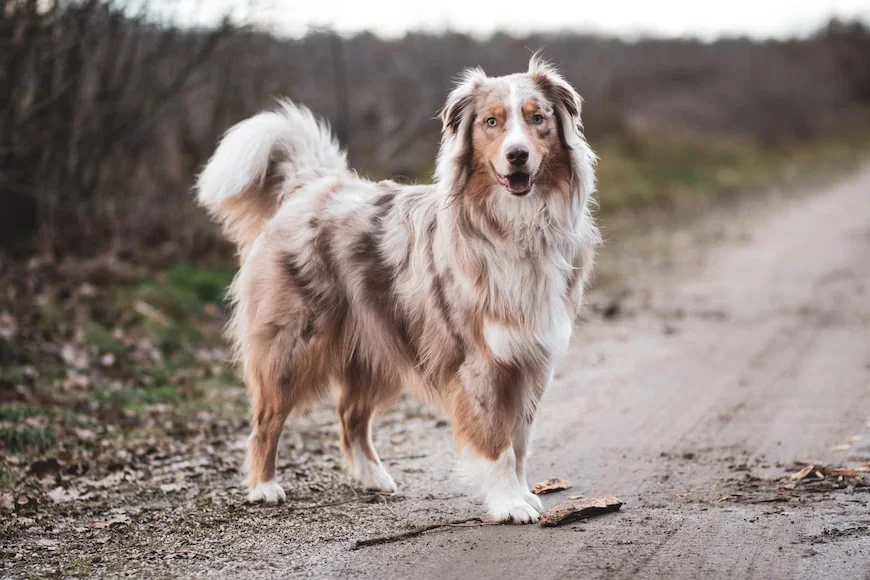
Australian Shepherds are all about agility and brains. They love staying active and will keep up with any adventure you’ve got planned.
Jack Russell Terrier
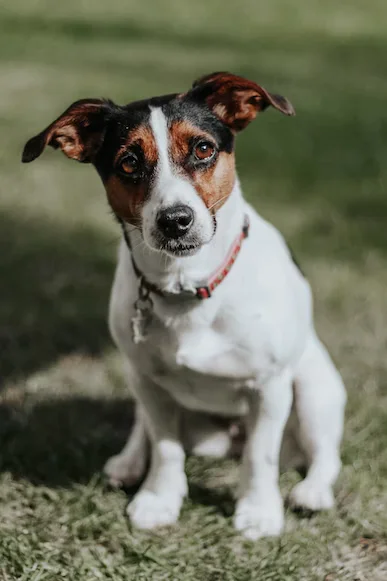
Small but bursting with energy, Jack Russell Terriers are like perpetual motion machines. They’re all about play, fun, and being your outdoor adventure buddy.
Weimaraner

Weimaraner are sleek silver-coated dogs that are the definition of athleticism. They’re built for running, swimming, and basically, any activity that gets their heart racing.
Mixing Fun with Fitness: Keeping Your Active Pup Thrilled
Ready to keep that tail wagging and that energy flowing? Here’s how:
- Game Time Galore: Get playful with games like fetch, tug-of-war, and any interactive game that gets them moving.
- Daily Strolls: Regular walks are a must, and switching up the scenery keeps things interesting for both of you.
- Tricks and Treats: Training can be an adventure too. Teach new tricks and commands during playtime for double the fun.
- Nature Excursions: Explore parks, trails, and outdoor spots that give your pup the chance to run wild and free.
- Brain Busters: Keep their minds sharp with puzzle toys, treat challenges and scent games. It’s like giving their brains a workout!
Active dog breeds are your ultimate adventure buddies, ready to join you in all the action and fun.
Low-Maintenance Dog Breeds
If you’re on the hunt for a furry sidekick that fits right into your whirlwind life without adding to the chaos, then let’s talk about low-maintenance dog breeds.
These adorable companions are all about simplicity and making life a breeze.
Join us as we dive into the world of hassle-free pups, meet awesome breeds like the Greyhound, Chihuahua, and Boston Terrier, and discover the secrets to giving your low-maintenance buddy the best care, even when you’re caught up in the hustle and bustle.
Qualities of Low-Maintenance Dogs: The Perks of Keeping It Simple
Low-maintenance dogs are like a breath of fresh air – they’re relaxed, adaptable, and won’t send you running for grooming supplies. Here’s why they’re awesome:
- Easy-Breezy Grooming: These breeds come with coats that won’t tie you up in knots. Say goodbye to constant brushing and grooming battles!
- Independent Spirits: Low-maintenance pups are perfectly cool with some solo time. They won’t mind if your schedule has you on the move.
- Low-Key Energy: They’re not marathon runners – these dogs are pretty content with a casual stroll or some playtime in the living room.
- Laid-Back Personalities: Whether you’re in a tiny apartment or a cozy house, these dogs are usually down for wherever life takes them.
Breeds with Minimal Grooming Needs: Meet Your Stress-Free Buds
Let’s get to know some of the low-maintenance breeds that’ll make your doggy journey a breeze:
Greyhound
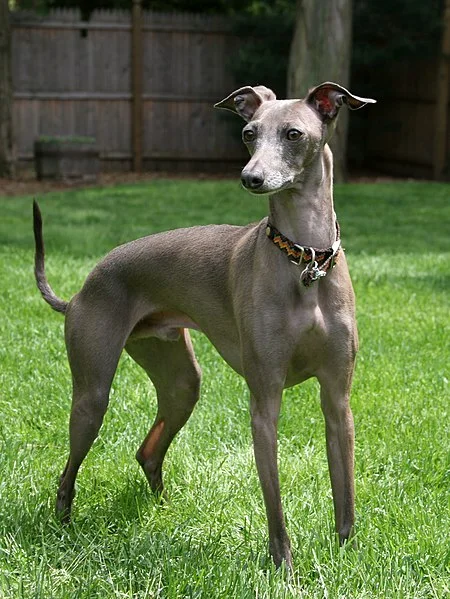
These Greyhounds are sleek stunners that are known for their low-maintenance coats and chill vibes. They’re like the couch potatoes of the dog world – perfect for some quality relaxation.
Chihuahua
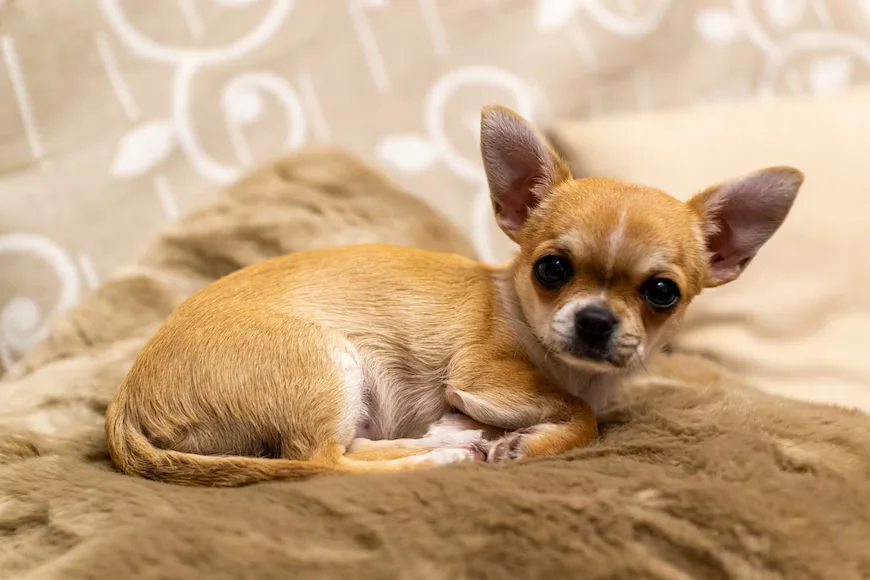
Small but sassy, Chihuahuas are pocket-sized pals that won’t make you pull your hair out over-grooming. They’re totally cool with hanging out beside you.
Boston Terrier
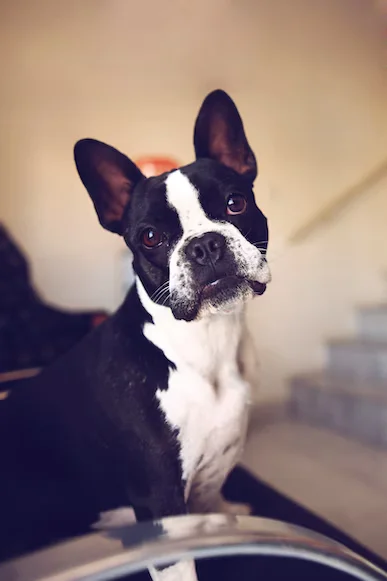
With their tuxedo-like markings and friendly personalities, Boston Terriers are a no-fuss option for any lifestyle.
Keeping It Simple for Busy Bee Owners: Tips for Happy Tails
Don’t let your packed schedule come between you and your furry friend’s happiness. Here’s how to keep the tail wagging even when things get crazy:
- Smart Playtime: Engage your pup’s brain with puzzle toys and treat-dispensing games. It’s like fun with a side of mental workout!
- Quality Time: Even though they’re low-maintenance, your dog still craves quality time. So, carve out those moments for cuddles and play.
- Health Check-Ins: Regular vet visits keep your pup in tip-top shape. Prevention is the name of the game!
- Grooming Made Easy: Even low-maintenance dogs need a little pampering. Keep their nails, teeth, and ears in check for their best health.
Low-maintenance dog breeds are like the zen masters of the dog world – they bring calm and joy without any added fuss.
Senior Dog Breeds
As our furry friends grow older, they become even more precious.
Senior dog breeds are like the wise elders of the canine world, bringing a touch of grace and a heart full of love to every moment.
Join us as we explore the world of senior dogs, meet breeds like the Basset Hound, Shih Tzu, and Pug, and discover the secrets to providing comfort and care for our cherished senior companions.
Characteristics of Senior Dogs: Age is Just a Number
Senior dogs are like the cozy blankets of the dog world – they offer warmth, wisdom, and a lifetime of memories. Here’s what makes them extra special:
- Gentle Spirits: Senior dogs often have a calm and gentle demeanor, making them wonderful companions for quiet moments and loving cuddles.
- Lower Energy: While they might not zoom around like pups, senior dogs are content with a leisurely stroll and some quality relaxation.
- Time-Tested Bonds: Many seniors have an unbreakable bond with their humans, a friendship that’s been forged through years of shared experiences.
- Lifetime of Love: Adopting a senior dog means you’re giving them a golden opportunity to spend their twilight years surrounded by love and comfort.
Breeds Suitable for Senior Companionship: Meet Your Wise Pals
Let’s introduce you to some breeds that are perfect for seniors to share their golden years with:
Basset Hound
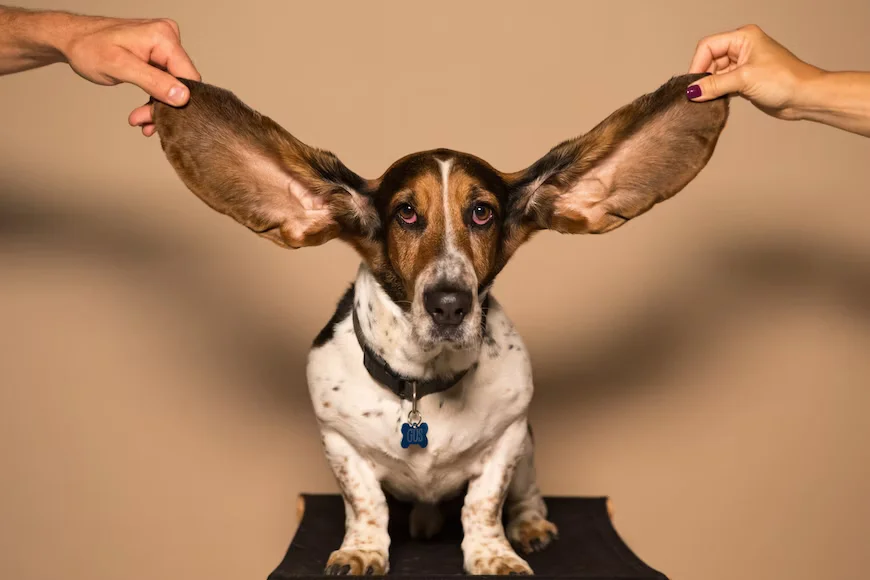
With their soulful eyes and laid-back nature, Basset Hounds are experts at providing companionship and love. They’re the definition of a loyal friend.
Shih Tzu
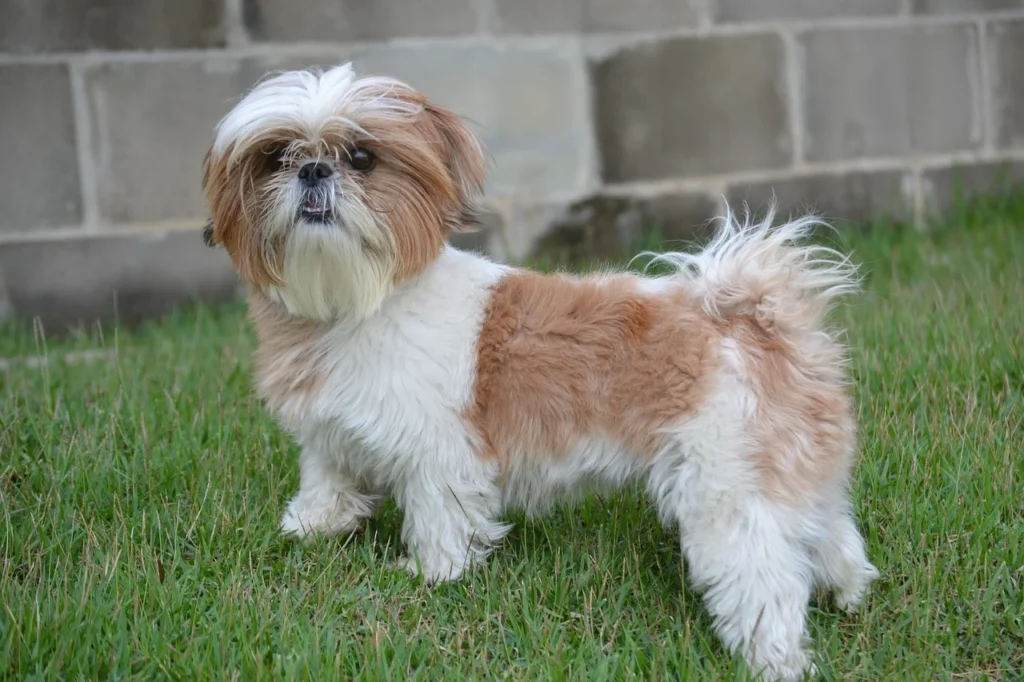
These little fluffballs are like pocket-sized bundles of joy. Shih Tzus offer snuggles, charm, and a whole lot of love to their senior humans.
Pug
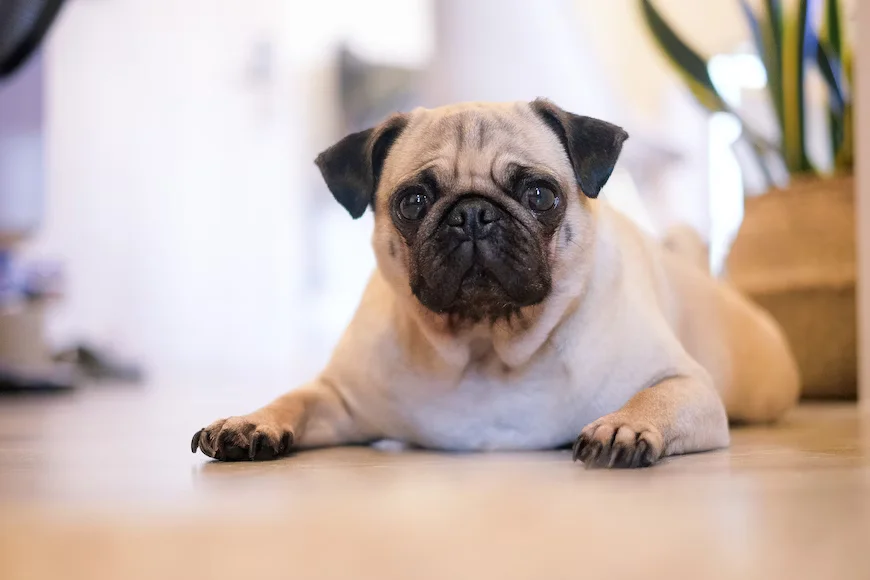
Pugs are like happiness in a furry package. Their loving and affectionate nature makes them ideal companions for seniors looking for a constant source of smiles.
Providing Comfort and Care for Aging Dogs: Loving Moments
As our furry friends enter their golden years, they need a bit of extra care and attention. Here’s how you can make their senior journey a comfortable one:
- Cozy Beds: Provide soft and supportive beds for those precious joints and help them rest easy.
- Gentle Exercise: Short, leisurely walks and gentle playtime keep them active without putting too much strain on their bodies.
- Regular Vet Visits: Keep up with vet appointments to catch any age-related issues early and ensure they’re feeling their best.
- Nutritional Love: Feed them a balanced diet that supports their changing nutritional needs, keeping them healthy from the inside out.
- Love and Time: Spend quality time with your senior pal, showering them with love, cuddles, and soothing massages.
Senior dog breeds are like the keepers of a lifetime of memories, ready to fill your days with warmth and love.
Crossbreed and Mixed Breed Dogs
If you’re all about embracing the one-of-a-kind and the extraordinary, then crossbreed and mixed-breed dogs are about to steal your heart.
These fantastic furry pals are a delightful blend of two awesome breeds, resulting in a unique and utterly charming combination.
Join us as we dive into the world of crossbreeds, explore popular picks like the Labradoodle, Cockapoo, and Goldendoodle, and discover the beauty of welcoming a one-of-a-kind pup into your life.
Understanding Crossbreeds and Their Awesome Traits: A Perfect Fusion of Fluffiness
Crossbreeds are like the doggy equivalent of a fantastic blend – think of it as getting the best of both worlds in one furry package. Here’s what makes them oh-so-special:
- Unique Combinations: Crossbreeds bring together the qualities and features of two different breeds, creating a pup that’s truly one-of-a-kind.
- Health and Vigor: The mixing of genes can often result in a healthier dog with fewer breed-specific health issues.
- Personality Surprise: Crossbreeds have their own unique personalities that might combine the best traits of both parent breeds.
- Endless Variety: With crossbreeds, you’ll find an incredible range of appearances, sizes, and temperaments, making it easy to find your perfect match.
Popular Crossbreeds: Meeting the Marvelous Mutt Mixes
Let’s dive into some popular crossbreeds that are making tails wag all over:
Labradoodle
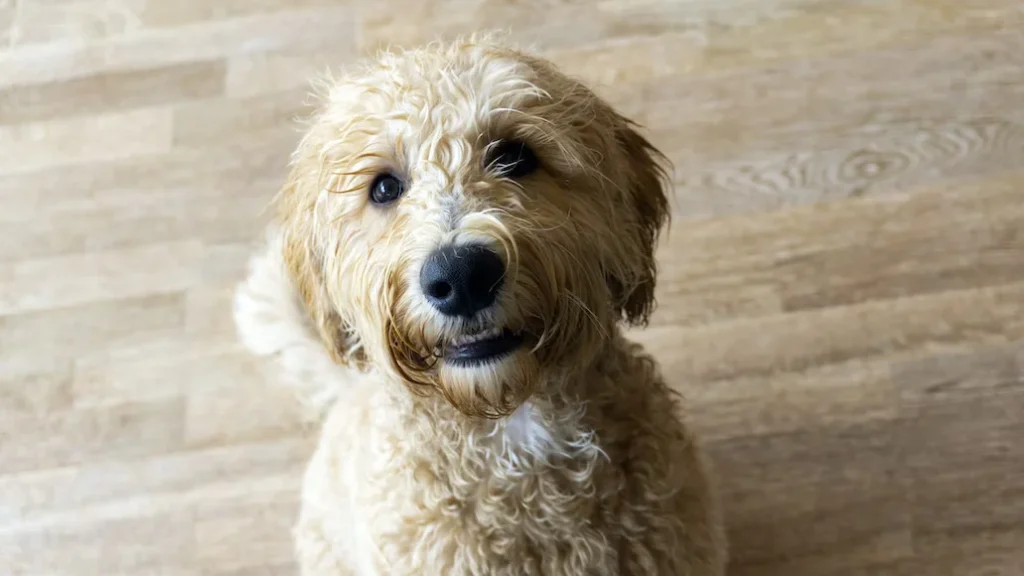
This cutie-patootie mix of a Labrador Retriever and a Poodle is all about charm and smarts. They’re often hypoallergenic too – perfect for those with allergies.
Cockapoo

The delightful combo of a Cocker Spaniel and a Poodle, Cockapoos are like a big hug wrapped in fur. Their affectionate nature and cute looks make them instant favorites.
Goldendoodle
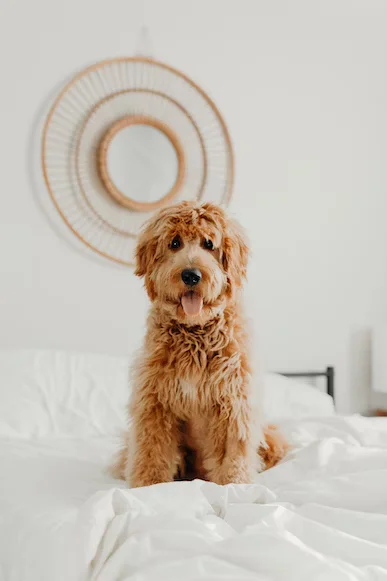
Mixing the Golden Retriever and Poodle genes results in the lovable Goldendoodle. They’re intelligent, friendly, and often non-shedding – great for allergy-prone folks.
Embracing the Unique Blend of Crossbreed Dogs: A Tail-Wagging Adventure
Here’s how to fully embrace the magic of having a crossbreed companion by your side:
- Discover Their Roots: Learn about the parent breeds to understand what makes your crossbreed pup tick – from exercise needs to grooming quirks.
- Tailor-Made Care: Each crossbreed is unique, so customize their care based on their size, energy levels, and personality.
- Training and Socializing: Just like any other pup, your crossbreed will benefit from positive training and early socialization for a well-rounded life.
- Healthy Lifestyle: Maintain regular vet visits, a balanced diet, and a healthy exercise routine to keep your pup thriving.
- Unconditional Love: Remember that crossbreed dogs offer a unique blend of love, loyalty, and unexpected surprises – and that’s what makes them truly special.
Crossbreeds and mixed breed dogs are like a joyful jigsaw puzzle where every piece is a burst of personality, charm, and unique traits.
Finding Your Perfect Canine Companion: How to Choose the Right Dog Breed
Bringing a new furry friend into your life is an exciting journey, but it’s essential to select a dog breed that aligns with your lifestyle and preferences.
With countless breeds to choose from, finding the perfect match might seem overwhelming.
However, by assessing your lifestyle, considering your living situation, and understanding breed traits, you can make an informed decision that leads to a happy and harmonious partnership.
Assessing Your Lifestyle and Preferences
Before you fall head over paws for a particular breed, take a moment to reflect on your lifestyle and preferences.
This introspective process will help you narrow down your options and find a breed that suits you perfectly.
- Activity Level: Are you an active adventurer or more of a homebody? Different breeds have varying energy levels. High-energy breeds like Border Collies and Labrador Retrievers require ample exercise, while breeds like Bulldogs and Shih Tzus prefer lounging.
- Time Commitment: Dogs are social animals that crave companionship. Some breeds demand constant attention, while others are more independent. Consider how much time you can dedicate to training, playtime, and bonding.
- Allergies: If you or a family member suffers from allergies, hypoallergenic breeds like Poodle and Bichon Frise might be ideal as they shed less dander.
Considering Your Living Situation
Your living environment plays a crucial role in selecting the right dog breed. Take these factors into account to ensure a comfortable coexistence:
- Space: Do you live in a cozy apartment or a spacious house? Larger breeds like Great Danes might struggle in confined spaces, while smaller breeds like Chihuahuas adapt better.
- Yard: A breed’s exercise needs correlate with the space you have. Breeds that require extensive running, such as the Siberian Husky, thrive in homes with sizable yards.
- Noise Tolerance: Some breeds are more vocal than others. If you’re in an apartment with thin walls, quieter breeds like Basenjis could be a considerate choice.
Matching a Breed’s Traits to Your Needs
Understanding breed characteristics and personalities is key to finding a dog that fits seamlessly into your life. Here’s how to align breed traits with your needs:
- Temperament: Breeds possess distinct temperaments, ranging from outgoing and friendly (Golden Retrievers) to reserved and loyal (German Shepherds). Choose a temperament that resonates with your personality.
- Grooming Needs: Long-haired breeds like the Afghan Hound demand frequent grooming, while short-haired breeds like the Beagle are less maintenance-intensive.
- Training Ease: Some breeds are highly intelligent and eager to please, making training a breeze. Breeds like Border Collies excel in agility and obedience, while other breeds may require more patience and consistency.
Selecting the right dog breed is a thoughtful process that involves aligning your lifestyle, living situation, and preferences with a breed’s traits.
So, take your time, do your research, and welcome a furry friend that enriches your life in countless ways.
Bringing Your New Dog Home
The moment you’ve been waiting for has arrived – it’s time to bring your new canine companion home!
This exciting step marks the beginning of a beautiful journey filled with love, joy, and furry cuddles. To ensure a smooth transition for your new four-legged family member, follow these essential steps for a successful homecoming.
Preparing Your Home for a New Dog
Creating a welcoming and safe environment for your new dog is crucial for their well-being and happiness. Here’s how to set the stage for a paw-sitively delightful arrival:
- Dog-Proofing: Just like you would baby-proof your home, dog-proofing is essential. Remove hazardous items, secure trash cans, and keep small objects out of reach.
- Designated Space: Create a cozy space for your dog with a comfortable bed, water bowl, and some toys. This safe haven will help your dog feel secure.
- Supplies: Gather all the necessary supplies before your dog arrives. This includes food, bowls, a leash, collar, identification tag, and grooming essentials.
Introducing Your Dog to the Family
A warm and harmonious introduction is vital to help your new dog feel welcomed and loved. Follow these steps to ensure a smooth transition:
- Quiet Arrival: Upon arrival, keep the environment calm and serene. Avoid overwhelming your dog with too many new faces and noises.
- Family Meeting: Introduce your new dog to family members one at a time. Allow your dog to approach them at their own pace, and remind everyone to be gentle and patient.
- Other Pets: If you have other pets, introduce them gradually in a neutral space. Supervise their interactions to ensure positive encounters.
Initial Training and Bonding Activities
Building a strong bond with your new dog begins with training and engaging activities. These initial interactions will lay the foundation for a lifetime of companionship:
- Basic Commands: Start teaching basic commands like “sit,” “stay,” and “come.” Positive reinforcement, such as treats and praise, encourages learning and cooperation.
- Daily Routine: Establish a consistent daily routine for feeding, playtime, walks, and potty breaks. Dogs thrive on predictability, and this routine helps them settle in quickly.
- Play and Bonding: Engage in interactive play sessions to foster a strong bond. Play fetch, tug-of-war, or explore the great outdoors together.
By creating a welcoming environment, introducing your dog to the family with care, and initiating positive training and bonding activities, you’re setting the stage for a joyful and fulfilling companionship.
Maintaining a Healthy and Happy Dog
As a devoted dog owner, ensuring the health and happiness of your furry friend is your top priority.
A healthy dog is a happy dog, and by prioritizing routine veterinary care, proper nutrition, exercise, and mental stimulation, you’re paving the way for a life filled with tail wags and doggy grins.
Routine Veterinary Care and Vaccinations
Regular visits to the veterinarian are essential for your dog’s overall well-being.
These appointments not only help prevent health issues but also catch any potential concerns early. Here’s what to consider:
- Wellness Check-ups: Schedule routine check-ups to monitor your dog’s health, weight, and dental hygiene. Your vet can also address any questions or concerns you have.
- Vaccinations: Stay up-to-date with vaccinations to protect your dog from common diseases like rabies, distemper, and parvovirus. Vaccination schedules are tailored to your dog’s age, breed, and lifestyle.
- Parasite Prevention: Regularly administer preventive treatments for fleas, ticks, and heartworms. These pests can lead to serious health issues if left unchecked.
Proper Nutrition and Exercise
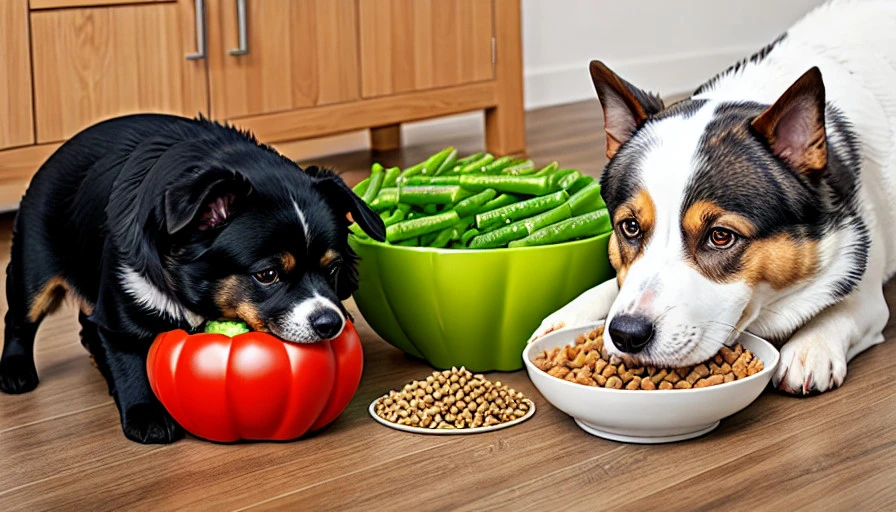
A balanced diet and regular exercise contribute to your dog’s vitality and longevity. Follow these guidelines for a healthy pup:
- Nutrition: Provide a high-quality, breed-appropriate diet to meet your dog’s nutritional needs. Consult your vet to determine the right portion sizes and feeding schedule.
- Hydration: Always keep a fresh supply of clean water available for your dog. Proper hydration supports digestion and overall health.
- Exercise: Regular physical activity is crucial for maintaining a healthy weight and mental well-being. Engage in daily walks, play fetch, or explore dog-friendly parks to keep your dog active and happy.
Mental Stimulation and Enrichment

A happy dog is one that’s mentally stimulated and engaged. Enrich your dog’s life with these activities:
- Interactive Toys: Offer toys that challenge your dog’s problem-solving skills. Puzzle toys and treat-dispensing toys keep their minds active and engaged.
- Training Games: Continue training throughout your dog’s life to keep their mind sharp and reinforce obedience. Teaching new tricks or refreshing old ones is a fun way to bond.
- Exploration: Take your dog on different routes during walks to expose them to new scents and environments. This sensory stimulation keeps them curious and mentally engaged.
Maintaining the health and happiness of your beloved dog requires consistent effort, but the rewards are immeasurable.
By prioritizing routine veterinary care, providing proper nutrition and exercise, and offering mental stimulation and enrichment, you’re ensuring that your canine companion enjoys a life filled with vitality, joy, and boundless tail-wagging enthusiasm.
Cherish every moment together and relish the love and companionship your furry friend brings into your life.
Conclusion
So there you have it – the journey to finding your perfect canine companion is a tapestry of thoughtful choices and wagging tails.
By understanding your lifestyle, matching it with the right breed, and embracing the wonderful world of dog ownership, you’re opening the door to a lifetime of happiness, love, and unforgettable moments.
As you’re getting ready to roll out the welcome mat, take a sec to create a doggy paradise at home.
Slow and steady wins the race when introducing your fur baby to their new digs. And hey, a sprinkle of training, a dash of love, and regular vet check-ups will keep your furry sidekick in tip-top shape.
You can explore further information on RSPCA or ASPCA related to your pet.
Get ready for a tail-wagging adventure that’s as unique as the bond you’ll share with your furry friend. Happy dog days ahead!🐶❤️
Explore more:
Explore more:
- Master dog training with these basic commands
- Dog foods and nutrition to keep your doggy healthy
- Common dog health issues and care
- Master the art of dog grooming with these hacks
- What are the different types of dog breeds
FAQs
Q1: How do I know if a breed is suitable for my apartment lifestyle?
Look for breeds with lower energy levels and a smaller size that can comfortably adapt to indoor living.
Q2: Are mixed-breed dogs a good option?
Absolutely! Mixed breeds can offer unique combinations of traits and can be just as wonderful companions as purebred dogs.
Q3: How can I determine a breed's grooming needs?
Research the breed's coat type and length. Long-haired breeds generally require more grooming, while short-haired breeds may need less maintenance.
Q4: I have allergies. Are there hypoallergenic breeds?
Yes, some breeds produce fewer allergens. Consider breeds like Poodles, Bichon Frises, or Portuguese Water Dogs.
Q5: How much exercise does my dog need daily?
Activity levels vary by breed. High-energy breeds may need an hour or more of exercise, while low-energy breeds may require less.
Q6: What's the best age to adopt a puppy?
Puppies can be adopted around 8-12 weeks old. This age allows for proper socialization and bonding.
Q7: Can I adopt a dog if I work long hours?
It's important to consider a breed that can handle alone time, or explore options like doggy daycare or hiring a dog walker.
Q8: How do I introduce my new dog to my existing pets?
Introduce pets gradually in a neutral space, supervise initial interactions, and provide positive reinforcement for good behavior.
Q9: What's the best way to ensure my dog's mental stimulation?
Incorporate puzzle toys, training sessions, and interactive playtime to keep your dog mentally engaged and happy.
Q10: How can I prevent common health issues in my dog?
Regular veterinary visits, proper nutrition, exercise, and maintaining a clean living environment can help prevent many health concerns.
